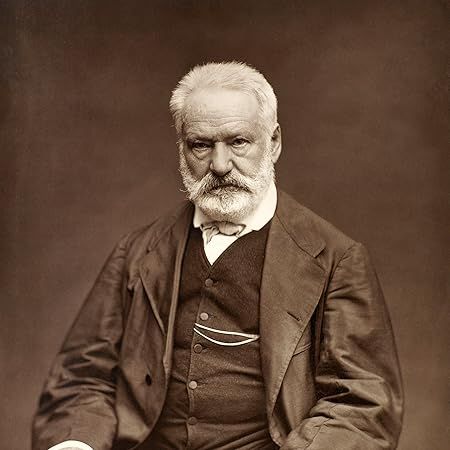The Hunchback of Notre Dame (Clydesdale Classics)
4.5 out of 5
1,898 global ratings
"As much a love letter to the cathedral as it is the story of two doomed lovers." —Smithsonian Magazine
Written in 1831, The Hunchback of Notre Dame by Victor Hugo is a beloved French gothic novel which centers around the wondrous Notre Dame Cathedral in Paris, France. Set during the reign of King Louis XI, we are introduced to the gypsy dancer Esmerelda. A beautiful girl, both inside and out, Esmerelda captures the hearts of everyone around her, including Captain Phoebus, Pierre Gringoire, and the hunchback Quasimodo, who is hidden away in the tower of Notre Dame as a bell ringer.
Unfortunately, Esmerelda has also caught the attention of Archdeacon Claude Frollo, Quasimodo’s abusive guardian. Frollo battles with his lust, eventually succumbing, leading him to pursue Esmerelda while leaving morality behind. A beautifully written novel about love, lust, and thirteenth-century Paris, The Hunchback of Notre Dame will leave readers both marveling at the beauty of Notre Dame and reeling at the lengths that people will go for love.
Packaged in handsome, affordable trade editions, Clydesdale Classics is a new series of essential works. From the musings of literary geniuses such as Nathaniel Hawthorne in The Scarlet Letter to the striking personal narrative of Harriet Jacobs in Incidents in the Life of a Slave Girl, this new series is a comprehensive collection of masterpieces by some of the most famous writers in history.
384 pages,
Kindle
Audiobook
Hardcover
Paperback
Audio CD
First published September 4, 2022
ISBN 9781949846157
About the authors
Victor Hugo
Victor Marie Hugo (/ˈhjuːɡoʊ/; French: [viktɔʁ maʁi yɡo]; 26 February 1802 – 22 May 1885) was a French poet, novelist, and dramatist of the Romantic movement. He is considered one of the greatest and best-known French writers. In France, Hugo's literary fame comes first from his poetry and then from his novels and his dramatic achievements. Among many volumes of poetry, Les Contemplations and La Légende des siècles stand particularly high in critical esteem. Outside France, his best-known works are the novels Les Misérables, 1862, and Notre-Dame de Paris, 1831 (known in English as The Hunchback of Notre-Dame). He also produced more than 4,000 drawings, which have since been admired for their beauty, and earned widespread respect as a campaigner for social causes such as the abolition of capital punishment.
Though a committed royalist when he was young, Hugo's views changed as the decades passed, and he became a passionate supporter of republicanism; his work touches upon most of the political and social issues and the artistic trends of his time. He is buried in the Panthéon. His legacy has been honoured in many ways, including his portrait being placed on French franc banknotes.
Read more
Reviews
Alexander Garcia
5
Amazing book!.
Reviewed in the United States on April 27, 2014
Verified Purchase
The plot begins by following a somewhat minor character (who keeps popping up at crucial points and becomes something more major to the plot and theme), a poet who writes a morality play, fails utterly to perform it and get paid for it, and falls in with a crowd to thieves and vagabonds. On his descent, he encounters the innocent and beautiful Esmeralda (with her pet goat, who is even more enchanting), the pitiful and powerful Quasimodo, the shining knight Phoebus, and the conflicted archdeacon Claude Frollo: all the major characters. His story entwines with theirs as we learn their histories, their desires, and their deepening involvement with each other that can only end in tragedy.
I loved how slowly the book built up the plot, revolving through each character and the occasional tangent into say, the history of medieval Paris, or a description of Notre Dame, before really taking off. The pacing is incredible: the first 300 pages are sort of set-up, and then the plot moves as the characters really encounter and react to each other, which is another 300 pages. The characters are completely indivduated, whether it's one of the main ones we see every other chapter, or a minor one, like the poet, or King Louis XI, or Frollo's younger brother, a gambler who steals church money to pay for his free-wheeling ways. The setting of medieval Paris (Hugo delayed writing the novel several times to continue his research) is so well described you might want a map to follow along when he describes a certain area of town that no longer exists (and didn't exist in 1830 when Hugo was writing).
In short, a great book, highly recommended for people who like long books and have a certain kind of patience for the way novels were once written.
Read more
6 people found this helpful
David
5
Great Book, Pleased Customer!
Reviewed in the United States on May 13, 2024
Verified Purchase
This relatively hard to get classic book came all the way to me here in South Korea early and in great condition. It is a good-looking and collectable edition with a great cover at a reasonable price. What more could you ask for!
William Capodanno
5
Notre Dame de Paris -- C'est perfect!
Reviewed in the United States on April 30, 2008
Verified Purchase
After a recent trip to Paris with my son on a business trip, I decided it was crazy that I had been to Paris and inside Notre Dame so often yet had not read this classic novel. As someone who loves modern Paris, this book captivated me with its vivid portrayal of life in medieval Paris. What a far cry from Baron Hausman's modern Paris -- a Paris with teeming with squalor, poverty, vagabonds -- and the King's Court. Hugo paints wonderful portraits of the main characters -- the hunchback bellringer of Notre Dame, Quasimodo; the tormented archdeacon, Claude Frollo; the exotically beautiful gypsy, Esmeralda.
All of these characters and the city of Paris come to life in a way that transports one back 650 years. My only criticisms of the book are the couple of chapters that painstakingly outline the street detail of Paris and the layout of Notre Dame. For me, these interrupted the flow of the story, the development of the characters and left me quite bored. As soon as Hugo got back into the core story and plot, I was re-captivated.
I do wish that the original French title was preserved -- Notre Dame de Paris -- rather than the English "Hunchback of Notre Dame". While Quasimodo is certainly a core character, the book is a story about medieval Paris, the daily life of the city, the ordinary citizens of the growing city,the privileged class and themes of love, passion, death and honor. For someone misled by the title, this book is far richer, deeper and more complex than just the story of a deformed bell-ringer of Notre Dame in spite of the images that are etched in most people's minds, a great many who haven't read the book.
This is truly one of those novels that deserves its rightful place in the pantheon of literature classics.
Read more
8 people found this helpful
Danielle Bruckner
5
great story, but long winded.
Reviewed in the United States on January 2, 2024
Verified Purchase
I love the characters and the plot. I must warn future readers about the excessive tirades about architecture and the history behind art and any changes made over 3 hundred years to Paris. Still a fabulous book!
JCR
5
Beautifully written and sad
Reviewed in the United States on November 5, 2023
Verified Purchase
I have read Hugo's Les Miserables and 93. This book is different in it being in not going into tangents/side stories and focusing on the development of the characters and unlike Disney's version much darker and sad but at the same time drawing the reader into getting to feel for the characters which of course only adds to the impact as it goes along. I also got the added benefit as I felt as I was living during this time in Paris while reading it. Such a great read.
Read more

Michele
5
A Captivating Classic
Reviewed in the United States on January 5, 2014
Verified Purchase
While Les Miserables may generally be considered Victor Hugo's greatest and most popular work, my favorite by far is The Hunchback of Notre Dame.
There are several reasons why I consider Hunchbank superior to Les Mis. First is that it is a more compact and tightly written story, covering only 6 months compared to the 20+ years of Les Mis. It has all the drama and emotion of Les Mis (more about that below) but without all the verbose divergences for which Les Mis is notorious. While Les Mis is filled with several of Hugo's lengthy discourses on topics having little or nothing to do with the story itself -- and which certainly do not advance the plot at all -- Hunchback has only one such divergence: Hugo's discussion of the architecture of Paris.
Secondly is the setting of Hunchback -- Medieval Paris. I realize this is purely subjective, but for me the color, pageantry and drama of 15th century Paris -- which Hugo illustrates so effectively -- is the most captivating of settings. The superstitions which still had a stronghold on society at that time, and the half-barbaric city which Paris still was, add to the drama and bitter irony of the story.
But for me what truly makes Hunchback the better book is the sheer power of the story itself. This is an action-driven plot from very first paragraph (as opposed to Les Mis which is more thoughtful and contemplative), and Hugo spends only minimal time describing the personalities and backstories of his characters, letting their full aspects emerge as the story progresses. The story is full of all the dark superstition and emotion that makes for a truly Gothic tale, and the misplaced loyalties, betrayals, misunderstandings and bitter irony that fill the tale make it heartwrenching and powerful.
It is curious that the English title of this book focuses on the hunchback, since he is not the main character; one could argue that there is no single main character at all. However, Quasimodo is the only truly good, selfless character and the only one who manages to not lose the reader's sympathy by the book's end. That the only character who felt true, genuine, unselfish love was a hideously deformed hunchback, a total outcast of society, is perhaps the bitterest irony of all. Hugo's theme of the spider and its web is a perfect capsulation of the tale he spun in The Hunchback.
As in Les Mis, Hugo has crafted a story that probes the darker aspects of human nature. And as with Les Mis, Hunchback is not a happy story with a happy ending. However, unlike the more melancholy sadness of Les Mis, the sadness of The Hunchback of Notre Dame is bitter and acute.
This is my second listen to Hunchback and definitely won't be my last. I highly recommend this captivating classic. Frederick Davidson does a fine narration. He is growing on me since this is the third audio book I've listened to with his narration and I find that with each one the drawing, affected voice with which he speaks is less annoying. He does a fantastic job with character voices, and Hunchback provides the perfect vehicle for this talent. His weakest performance is that of Esmeralda, but I've yet to hear a male narrator who can do a young female voice well. All in all his narration adds color and personality to this already animated story.
Read more
16 people found this helpful
Morgan
5
Tough read-- So worth it!!
Reviewed in the United States on December 5, 2019
Verified Purchase
I will admit, this is a hard book to get through. It was the first unabridged classic I've read and it's not easy getting through some of the monologues, historical descriptions, and rants about philosophy. The first half of the book was especially difficult, because so many of the characters and scenes don't seem important to the plot. But trust me, they are. Victor Hugo brings everything together in a powerful ending that scrubs your heartstrings with iron wool and leaves you reeling for days! But this book, as Victor Hugo himself explained, isn't just about the adventure and romance. It's supposed to kindle in the readers a deep appreciation for gothic architecture. It's also supposed to capture and bring to life the culture and lifestyles of 15th century Paris- a time period that is increasingly overlooked and forgotten. So even though the tough parts of this book feel long, they still have tremendous value, and I'm so thankful I didn't stop reading halfway through (like I almost did). This book has had an incredible, lasting impact on me. It is now one of my most cherished reads. So, yes, I absolutely recommend this book to anyone willing to read it. I also recommend listening to it on audio. The reader Philippe Duquenoy is phenomenal! He brings the characters to life and even reads through those long, tedious descriptions in an engaging way. Plus, if you get tired of the the descriptions, you can just tune them out until the actions picks up again, without giving up on the book! Also, really make the time you spend reading it fun. Watch the play. Listen to the soundtrack. Learn the music on an instrument. And whatever you do, don't give up on this incredible book!! It's a world-reknown classic for a reason. And you don't want to miss out.
Read more
45 people found this helpful
Jill M. Nolan
4
A hunchbacked bellringer of Notre Dame and his forbidden love for a beautiful gypsy woman
Reviewed in the United States on January 16, 2023
Verified Purchase
"The Hunchback of Notre Dame" is a classic novel written by Victor Hugo, and published in 1831. The novel is set in medieval Paris and tells the story of Quasimodo, the hunchbacked bell-ringer of Notre Dame Cathedral, and his forbidden love for the beautiful gypsy Esmeralda.
One of the strengths of the book is its vivid and descriptive writing, which brings the medieval setting to life. Hugo's writing is rich with detail and atmosphere, and he paints a vivid picture of the sights, sounds, and smells of medieval Paris.
Another strength of the book is its complex and well-developed characters, particularly the main character Quasimodo. He is a tragic figure, born with a physical deformity and rejected by society, but his inner beauty, loyalty, and generosity shine through. The novel also deals with themes such as love, acceptance, and the dangers of obsession and prejudice.
Overall, "The Hunchback of Notre Dame" is a powerful and moving novel that will stay with readers long after they finish it. It is a must-read for anyone interested in classic literature and those who want to understand the beauty of human nature and the harsh reality of society.
I would rate this book 4.5 out of 5 stars. The book is a classic and it is well-written, its descriptive writing and complex characters make it a great read. However, the book is quite heavy and it could be a bit challenging for some readers, but it is worth the effort.
Read more
4 people found this helpful
Kindle Customer
4
Interesting Read
Reviewed in the United States on November 8, 2022
Verified Purchase
I read the classics for fun and a break from the usual political and economic reading that I mainly indulge. This book was fun. Hugo presents the characters early and you pretty much know what's coming but he takes you on such a great ride through Paris and Notre Dame, it's worth hanging on. Funny thing is it leaves me with two off beat questions. Why does Gringoire choose the goat and why consider Pheobus dead just because he married (wealth, I assume)? Except to ravish her, he didn't seem smitten by Esmeralda. Which, I reckon, is a bit of a twist in itself. Along with the biggest twist, that Phoebus didn't save Esmeralda and she was hanged for murdering someone who was obviously alive.
Read more
3 people found this helpful
Amazon Customer
3
Avid reader, thought I could make it...boy was I wrong.
Reviewed in the United States on January 23, 2019
Verified Purchase
Honestly, I knew it was coming since I read the reviews, but I still underestimated how tiresome most of this book is. As other reviewers have said, the actual story of Quasimodo and co. is such a small portion of the book in comparison to the actual length of the work. It was really quite difficult to get through. If you find that the novels you read in high school (think Dracula, Hamlet, Catcher in the Rye, etc.) waxed poetic far too much for your taste, I would maybe look into an abridged version (no shade, that's what I was about to do) instead. Quasi's story is rather good, but it's buried under lengthy descriptions of settings that (in my opinion) did little to enhance the reading.
Read more
18 people found this helpful
Top Victor Hugo titles
Best Sellers
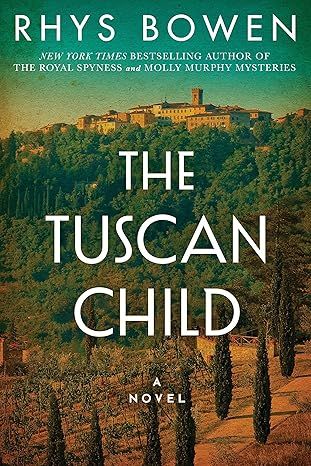
The Tuscan Child
4.2
-
100,022
$8.39
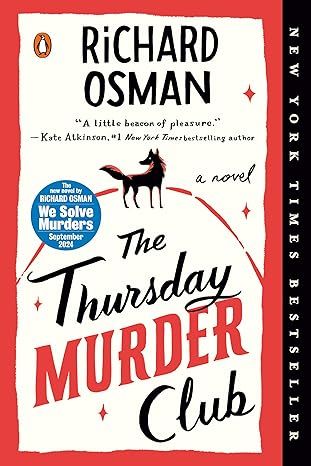
The Thursday Murder Club: A Novel (A Thursday Murder Club Mystery)
4.3
-
155,575
$6.33
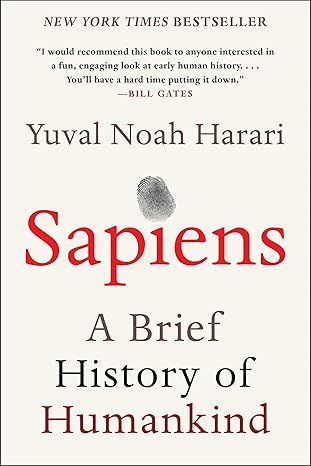
Sapiens: A Brief History of Humankind
4.6
-
140,302
$13.49
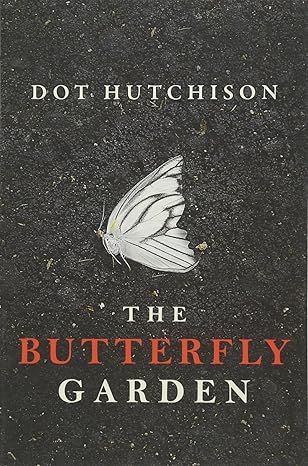
The Butterfly Garden (The Collector, 1)
4.3
-
88,556
$9.59
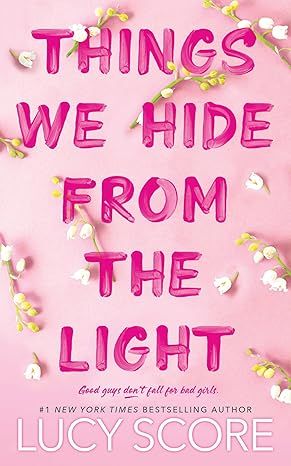
Things We Hide from the Light (Knockemout Series, 2)
4.4
-
94,890
$11.66
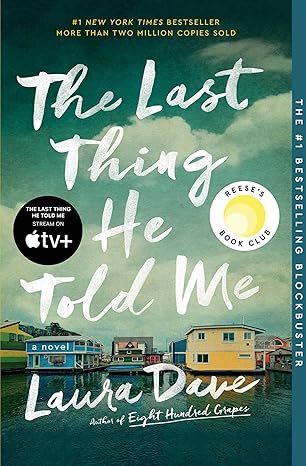
The Last Thing He Told Me: A Novel
4.3
-
154,085
$2.99

The Perfect Marriage: A Completely Gripping Psychological Suspense
4.3
-
143,196
$9.47
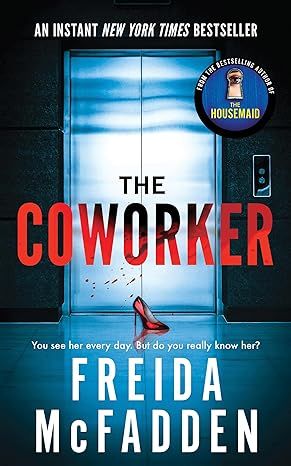
The Coworker
4.1
-
80,003
$13.48

First Lie Wins: A Novel (Random House Large Print)
4.3
-
54,062
$14.99

Mile High (Windy City Series Book 1)
4.4
-
59,745
$16.19

Layla
4.2
-
107,613
$8.99
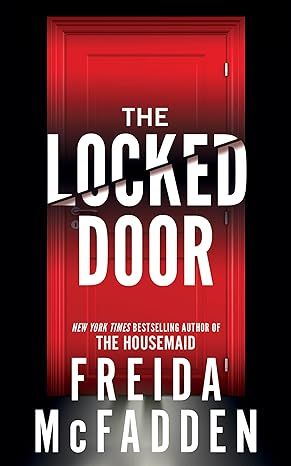
The Locked Door
4.4
-
94,673
$8.53

